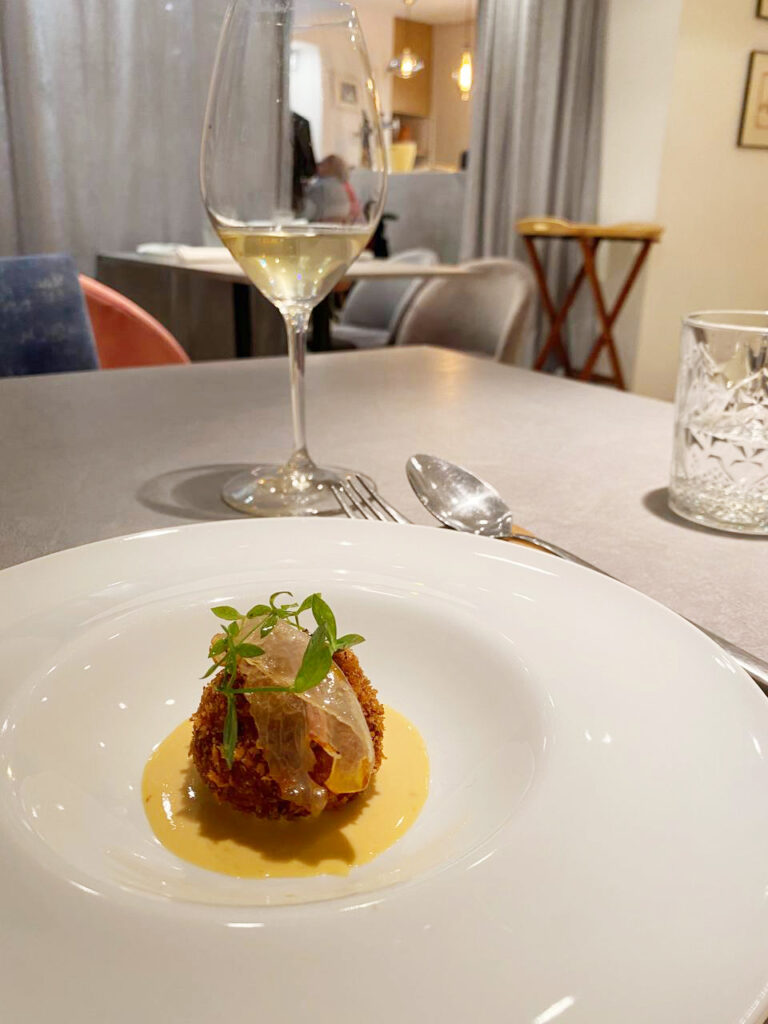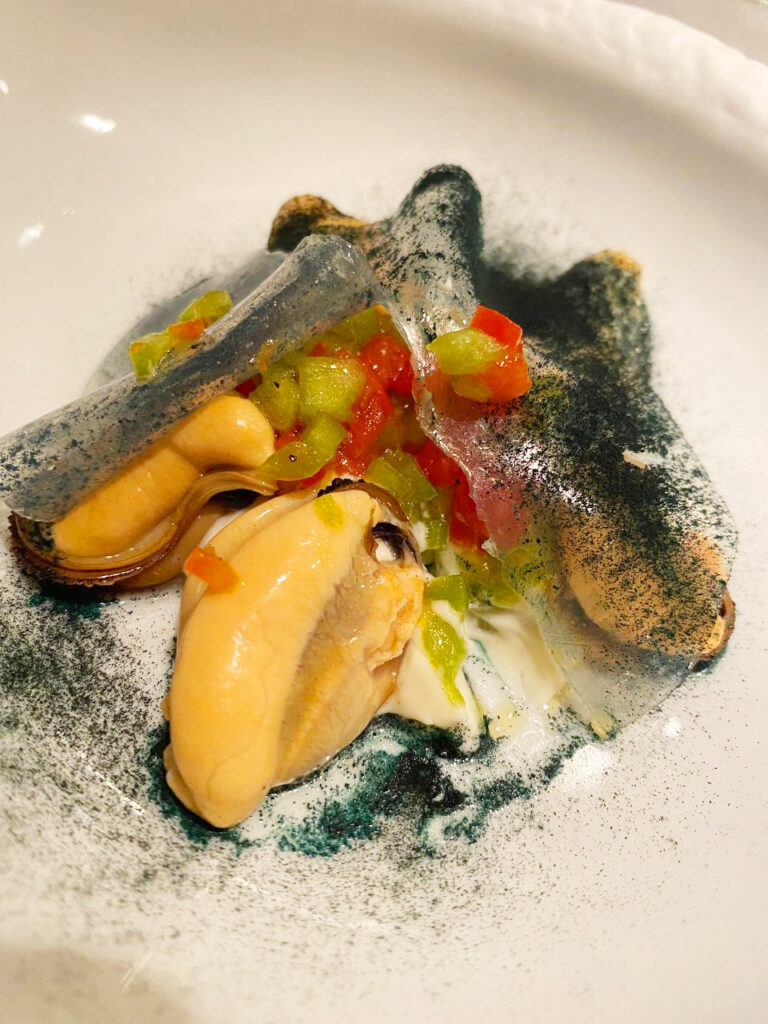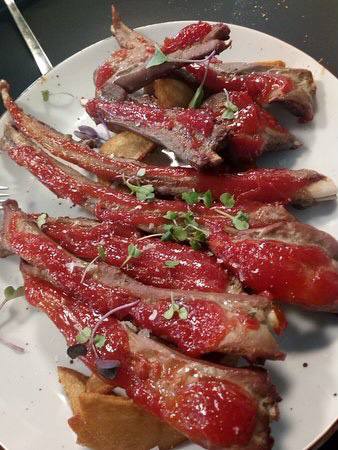Every time I travel I choose very carefully the places where I am going to eat and always include in the list at least one fine dining experience with modern cuisine based on local ingredients. This time in Valencia I was lucky to discover a relatively new restaurant. Xanglot is a cosy place with indoor sitting just two minutes away from Plaza de la Reina and El Micalet.
Sandra Jorge is the head chef here. She gave up business school to bring her culinary ideas to life and make her dream come true. Her most intriguing menu includes rose fish, skate wing and pig trotters.
In this interview, Sandra shares her story of opening a restaurant right before Covid and surviving, explains the differences between “paella” and “arroces” and gives useful tips about cooking these dishes.
In this interview Sandra shares her story of opening a restaurant right before Covid and surviving, explains the differences between “paella” and “arroces” and gives useful tips about cooking these dishes.
When did the passion for cooking start for you? When did you understand that you wanted to work with food?
I loved cooking since I was a little kid. Everyone in my family cooks (although not professionally) and as a kid I spent a lot of time in the kitchen watching my grandparents cook paellas etc.
Was it a simple choice for you then when you were choosing your future profession? Did you know straight away that you wanted to be a chef?
Not at all. When it was time to choose a university, I was 20. I went for business and management and studied it for two years. Then I realised that it wasn’t my cup of tea, I didn’t like it. So I quit.
How did you come up with the idea for the restaurant?
After I’d quit business school, I was working in a restaurant for a while. It was a nice place, beautiful ingredients, modern cuisine, but I knew in my heart that I wanted my own place. I wanted to create my own thing.
I shared these thoughts with my parents and they supported me. In fact, they both quit their jobs in order to help me open my own place. That is how Xanglot began.
First Xanglot was much smaller than this one and the concept of the menu was very different. The atmosphere was more informal and the cuisine was more traditional.
I kept working for another restaurant but all my free time I devoted to the Xanglot kitchen. Before long I realised it couldn’t go on like that, I was working all the time and felt exhausted. Also, I just wanted to focus on what I wanted to create as a chef, bring my own ideas to life.
What was the initial concept of this new Xanglot? How did you decide you want to create modern cuisine?
I love traditional cuisine, don’t get me wrong, I do love it. But working in that other restaurant gave me the chance to try more unusual approaches, and cook finer ingredients, so I couldn’t get that idea out of my head that I can apply the skill and knowledge I got there but combined with my own vision and my own taste.
It began in the summer of 2019. I quit working for another restaurant. And set to open a place where I could bring my dream into reality.
The restaurant opened right before covid, right? How did you cope with the lockdowns, lack of tourists, etc?
We had just opened, worked for four months and had to close for the lockdown straightaway. It was March – high season in Spain, because of the Fires Festival. It lasts a week, and a lot of tourists come to see it. It’s a profitable time for every restaurant and we all were looking forward to it. But we had to close right before.
It was really hard. The full lockdown lasted for two months. We were pouring money into rent, earning nothing. In two months some of the restrictions were lifted, and cafes and restaurants with terraces were allowed to open for business. But we don’t have a terrace.
The hard decision to make was to close for good or to endure. We were ready to endure. Two months later another set of restrictions was lifted and we were allowed to open, but we had to cut the number of seating in half. You can see now we have space for 40 people, at the time we were able to accommodate less than 20.
Did you try to find some other solutions? Launch new projects like takeaway etc?
The was no point to launch a takeaway in Xanglot, it’s not that type of food, also we’ve just opened and takeaway works better for popular places.
But for the second lockdown, I moved back to my hometown – Benimodo – for a bit and there I started making menu boxes with Spanish tapas.
Just 5 years ago the main direction in fine dining was using as many exotic ingredients as possible. Today the current has changed. Chefs are using local ingredients wherever they can, but try to look for the most unusual ways to cook and combine them. What is your favourite local ingredient that you feel you can never get tired of?
I love very basic ingredients. My favourite is rice. It’s very typical for Valencia.
I don’t think I tried anything cooked with rice on your menu?
Oh, that’s right. In Valencia we call all paellas – arroces – “rices” and traditionally it’s a lunch dish. We don’t normally eat paella for dinner, so we don’t serve it for dinner in Xanglot.
What is the most shocking or even yucky ingredient you worked with?
I work with many unusual ingredients. I am from a rather small village and I was raised in a culture where we don’t throw food away. So I am quite used to cooking with all parts of an animal. I also love the idea of taking something unconventional for a modern city and presenting it in a beautiful way, so nobody would have thought it could be made of the unpopular parts.
To give you an idea I cooked with rooster combs, chicken feet, pig trotters, pig head, pancreas and lamb kidneys.
Also, do you know what a sea cucumber is? It looks disgusting but it is surprisingly rich in taste and very delicious. I cook that too.
What is your fav dish to cook?
My favourite dish is all types of rice. As I explained earlier, “arroces” is a term we use in Valencia for what everywhere else is called paella. In Valencia there only one paella – paella Valenciana. And it is my favourite thing to eat. But in terms of cooking – I love all kinds of arroces.
Since your favourite ingredient is arroz and your favourite thing to cook is arroces, can you share a tip with us? Maybe something about choosing the right ingredients or maybe even the secret to how to make an amazing paella.
The first rule of cooking is to use as many seasonal ingredients as possible, because when in season they have more flavour and will give your dish more flavour.
Another tip I’m going to give is: fry your rice when cooking paella. A lot of recipes call for making a sauce first, then pouring in the water and then adding rice. I do fry my meats or fish or veggies first with onions, garlic and spices, then add rice, fry them all together and only then add water or stock. That way rice absorbs a lot more flavour.
What is the dish (good or bad) you can never forget?
I love my grandmother’s grilled tuna rib. Tuna is a huge fish, so it has quite big bones and you can cook them the same as pig ribs or cow ribs. It doesn’t even look like fish and it is so flavourful and delicious. This is the taste I will never forget.
I love my grandmother’s grilled tuna rib. Tuna is a huge fish, so it has quite big bones and you can cook them same as pig ribs or cow ribs. It doesn’t even look like fish and it is so flavourful and delicious. This is the taste I will never forget.




